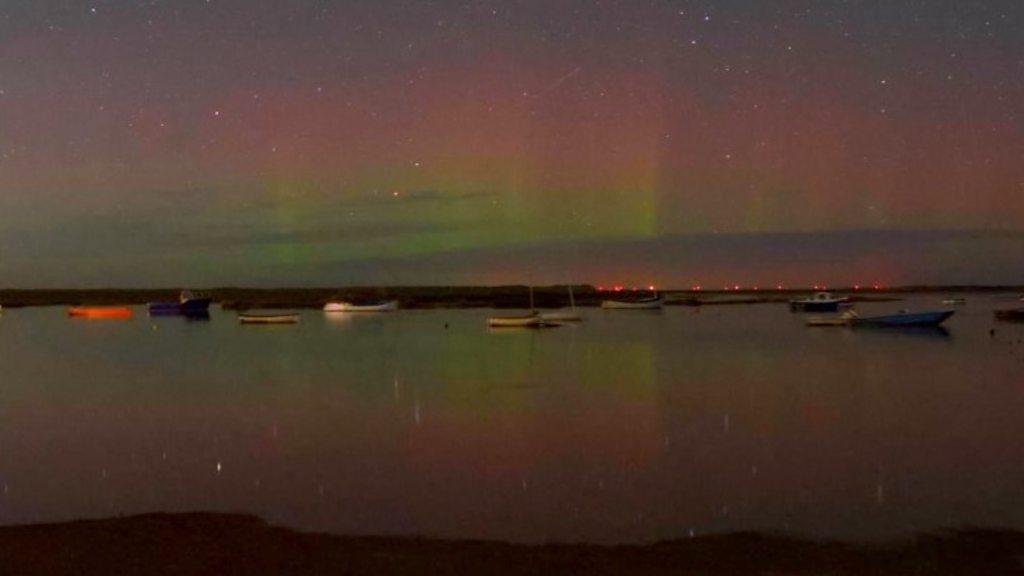Northern lights: Aurora seen across UK in spectacular display
- Published
Watch: Spectacular skies as northern lights fill the sky over the UK
In a very rare display, the northern lights were seen as far south as Kent and Cornwall on Sunday night.
Across more northern areas of the UK, the display was one of the best seen in a very long time by BBC Weather Watchers.
An aurora is formed by a solar flare erupting on the Sun, sending charged particles towards Earth which interact with our atmosphere.
More displays are expected in the coming nights.
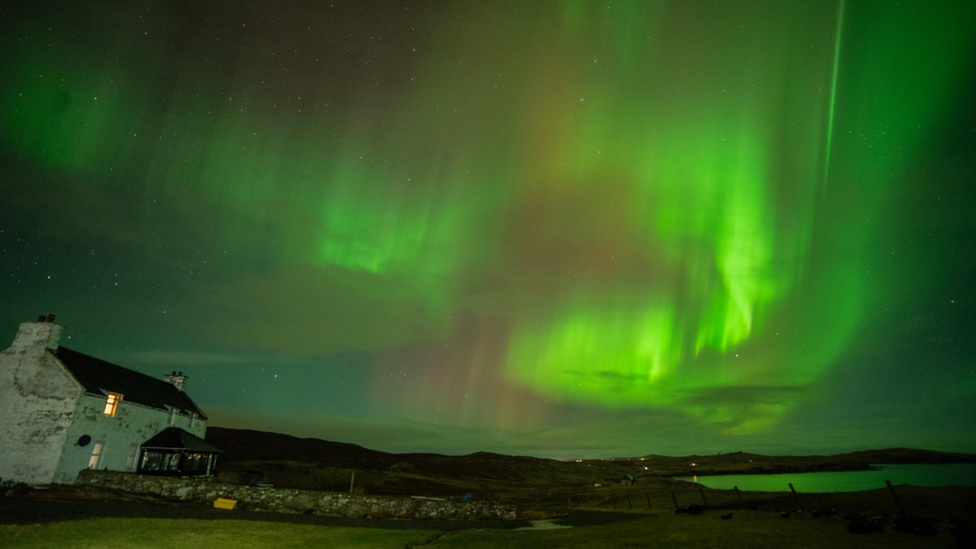
Vibrant green colours of the aurora filling the whole sky in the Shetland Islands
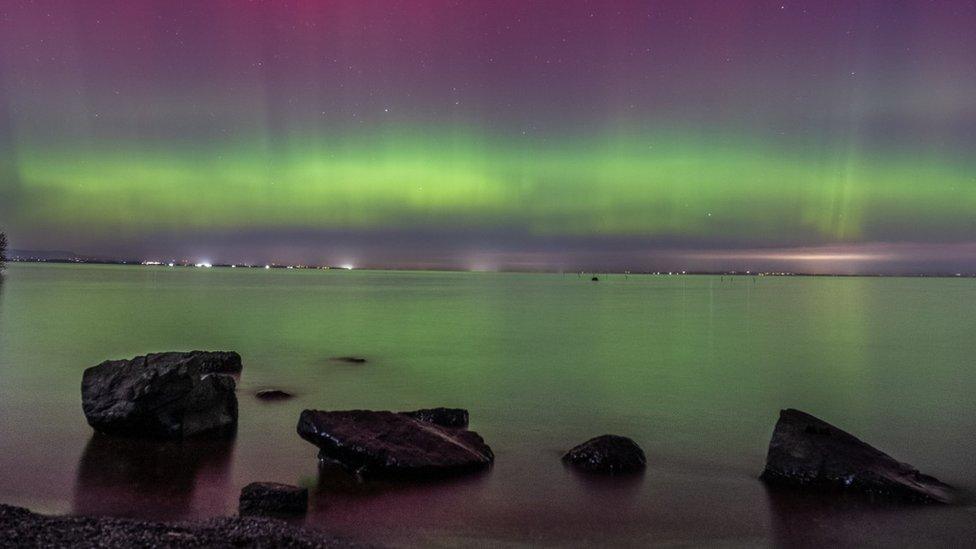
The green lights were projected onto south side of Lough Neagh in County Armagh, Northern Ireland
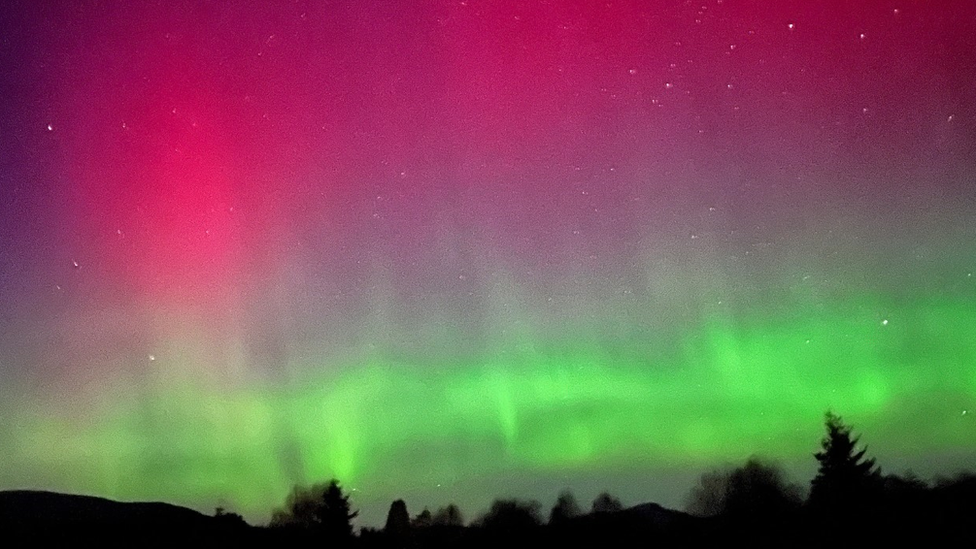
Bright green and deep red colours filled the sky in the Scottish Highlands
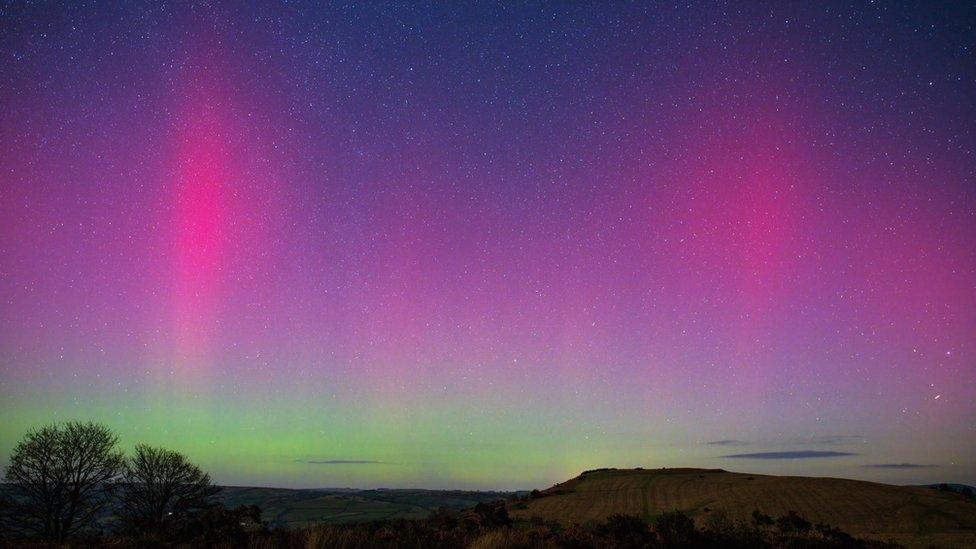
A kaleidoscope of colours was cast over the Brecon Beacons in south Wales
In the UK, we can often see the northern lights in Scotland, but they are rarely spotted in southern England.
On Sunday, there were sightings there as well as Northern Ireland, south Wales and Norfolk.
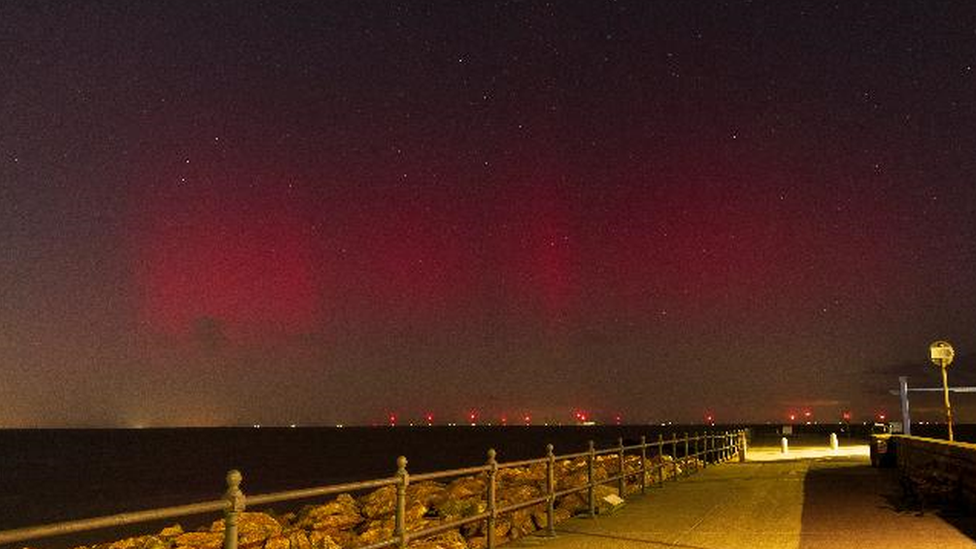
The lights are rarely seen in Kent, southern England
Over the last few days, a strong solar flare on the Sun's surface was directed towards Earth with charged particles reaching our atmosphere on Sunday night.
The charged particles interact with oxygen and nitrogen which then emit green and red colours over our poles.
If it's a strong solar flare, the charged particles can travel further away from the poles into middle latitudes such as southern England.
There may be another opportunity to see the northern lights on Monday night where skies are clear.
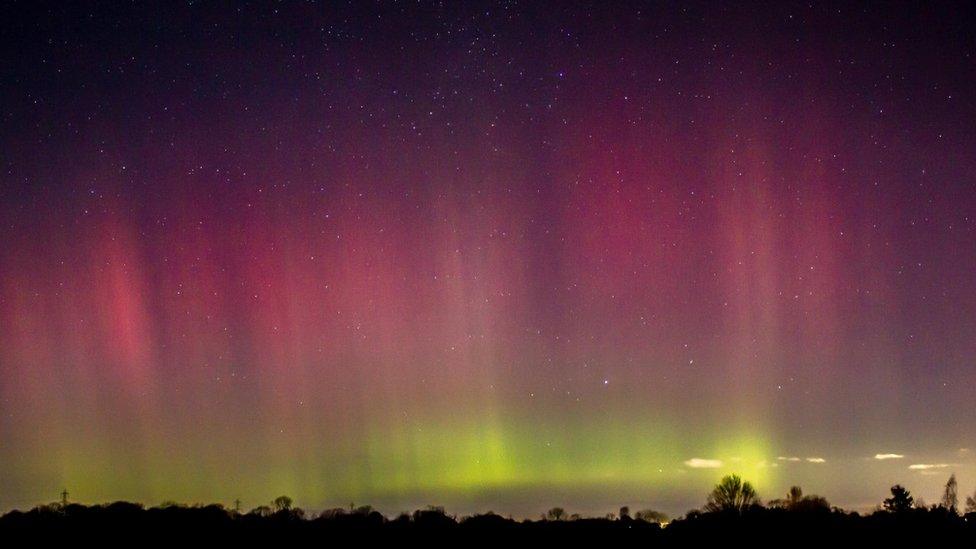
One BBC weather watcher captured the strong pink and purple hues covering the Norfolk sky on Sunday night
Photographer Gary Pearson, who watched the display from Brancaster Staithe in Norfolk on Sunday, said: "We had a fantastic showing from the northern lights last night.
"The aurora was clearly visible to the naked eye, though it was the long exposure taken by the camera that picked up the extremely vivid colours."

Photographer Gary Pearson captured the rare lights cast over Brancaster Staithe in Norfolk
In the heart of Teesdale, County Durham, revellers witnessed a blast of green and red light at Grassholme Observatory.
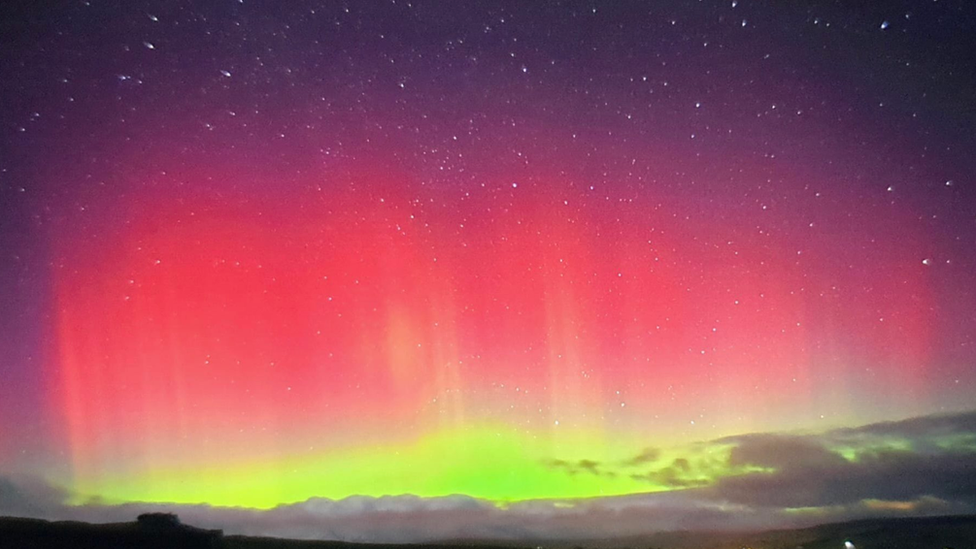
At Grassholme Observatory, County Durham, green and red lights filled the sky
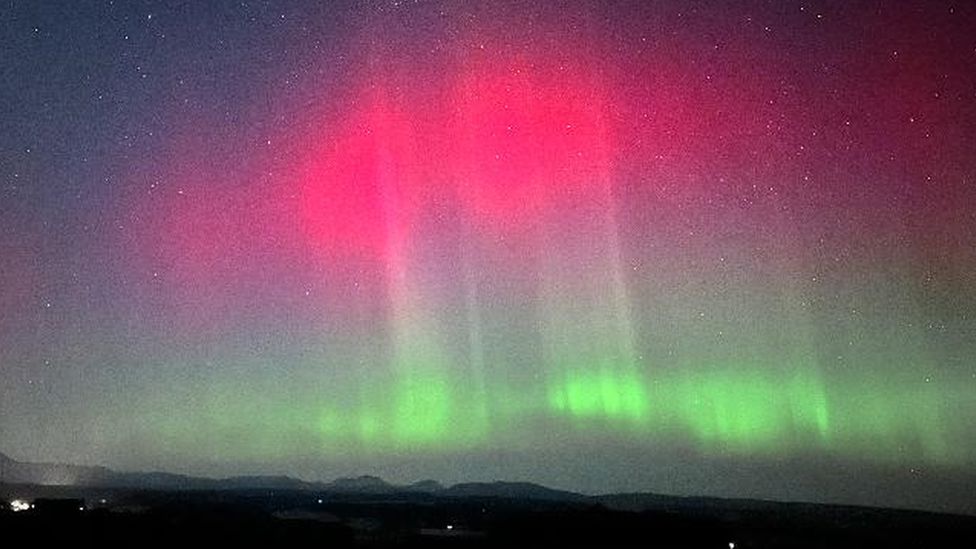
In Stirling, Scotland, the aurora was in full view
The Sun goes through an 11-year solar cycle measured in terms of how active its magnetic field is. As this magnetic field changes, so does the amount of activity on the Sun's surface.
The last solar minimum was in 2020, so activity on the Sun has been increasing since then and it is currently the most active since 2014.
Solar maximum is expected in 2025, more frequent displays of the aurora are likely in the coming years.
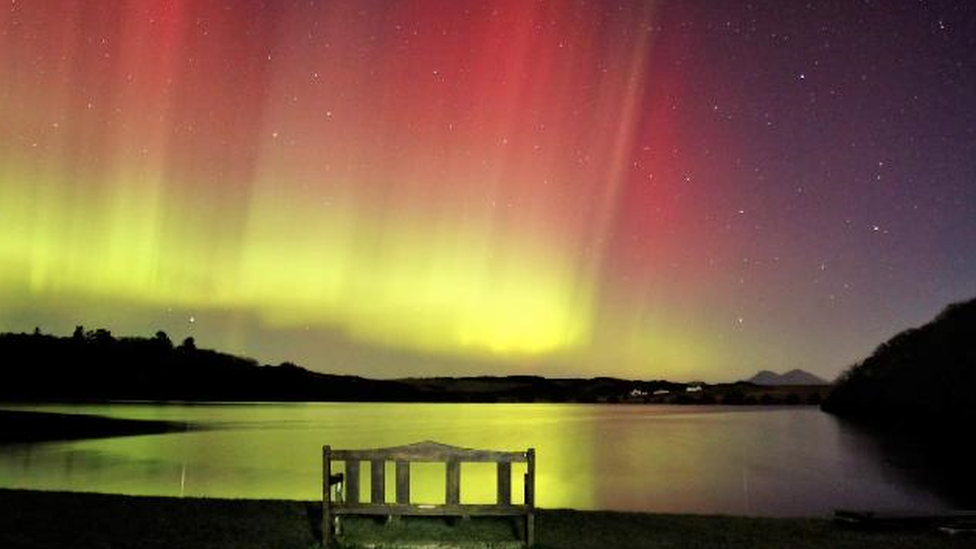
More yellow tones were seen in the aurora in Argyll and Bute, Scotland

Share your experiences by emailing haveyoursay@bbc.co.uk, external.
Please include a contact number if you are willing to speak to a BBC journalist. You can also get in touch in the following ways:
WhatsApp: +44 7756 165803
Tweet: @BBC_HaveYourSay, external
Please read our terms & conditions and privacy policy
If you are reading this page and can't see the form you will need to visit the mobile version of the BBC website to submit your question or comment or you can email us at HaveYourSay@bbc.co.uk, external. Please include your name, age and location with any submission.
Related topics
- Attribution
- Published2 February 2022

- Published16 January 2023
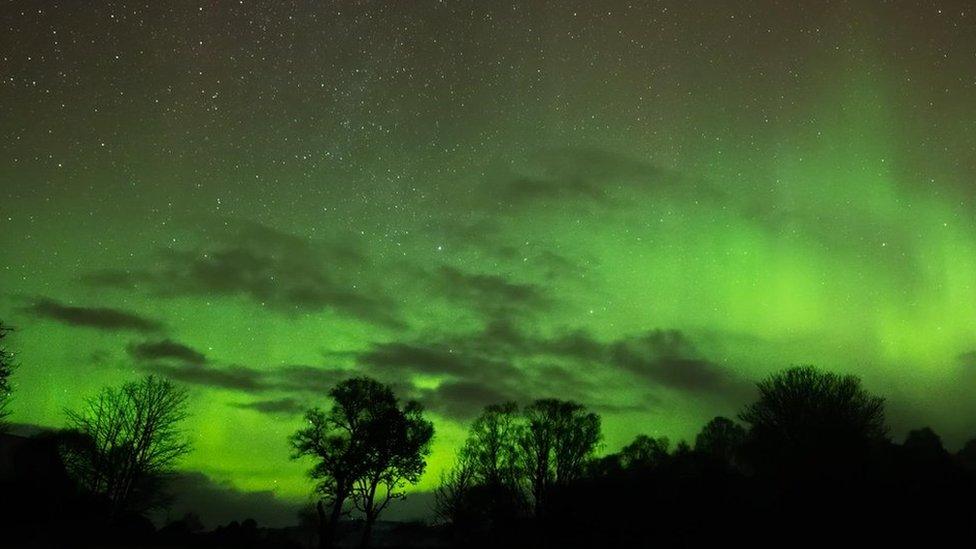
- Published29 November 2022
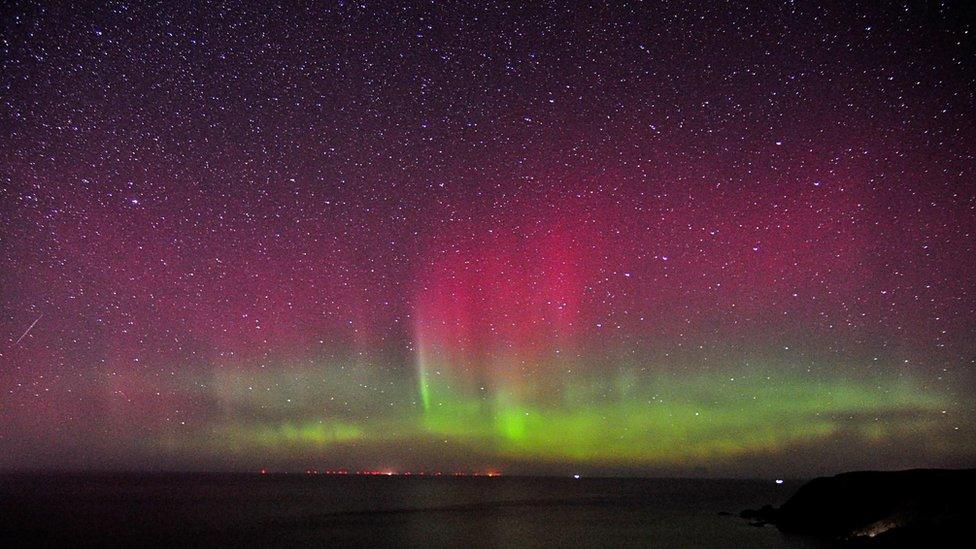
- Published31 October 2022
